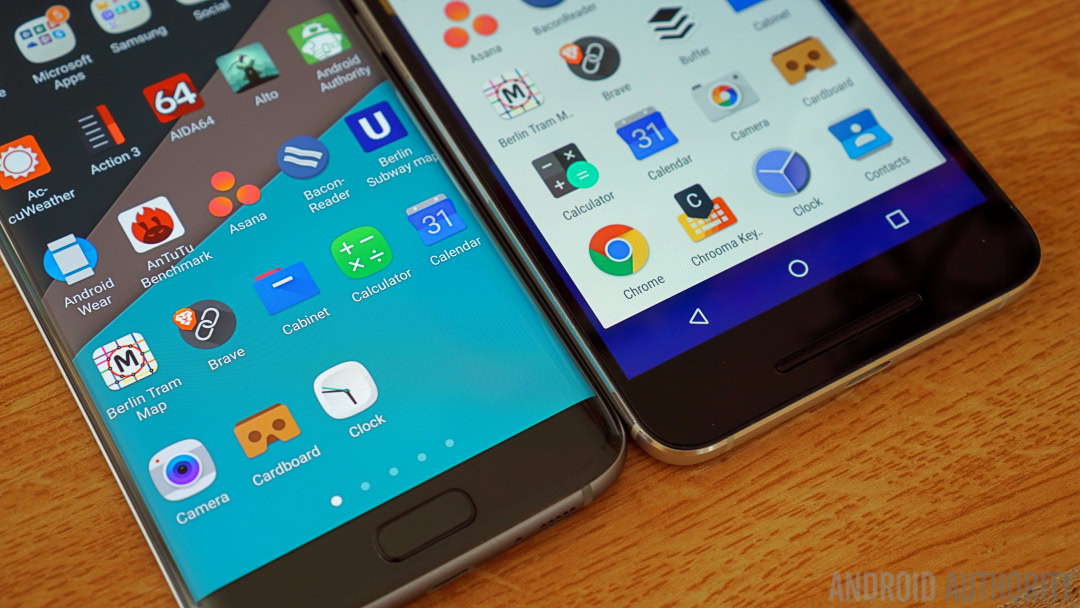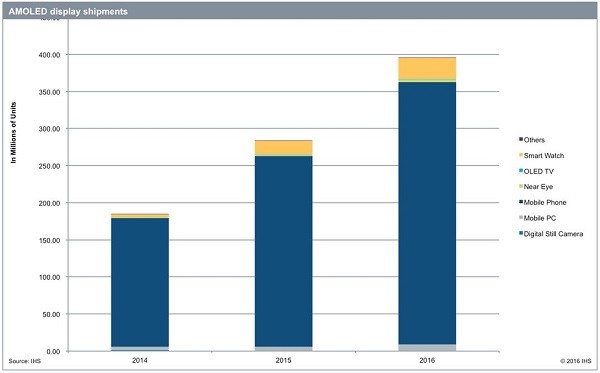Affiliate links on Android Authority may earn us a commission. Learn more.
AMOLED displays set to close in on LCD this year

AMOLED continues to be the display technology to bet on these days, as research from IHS anticipates that AMOLED will gradually close the gap on LCD, having overcome many of its previous manufacturing obstacles. Although LCD is still the most commonly used display type in electronic products, AMOLED display shipments are predicted to climb 40 percent year over year, reaching 395 million units in 2016.
In addition, AMOLED display revenue is expected to jump by 25 percent this year, making the industry worth some $15 billion. Previously, higher costs of production, lower manufacturing yields, and shorter LED lifespans had AMOLED displays limited to more expensive high end products. However, these issues were resolved throughout 2015, leaving OLED displays as a superior technological choice in a number of market segments.

Smartphones continue to be the most popular use for AMOLED displays, as its simpler manufacturing structure, thinner and lighter form factor, better color saturation, fast response times, and simpler integration with touch sensitive circuitry over LCD results in a number of consumer benefits.
Samsung has been selling its Super AMOLED panels in its smartphones for years now, and since 2015 manufacturers including BlackBerry, HTC, HUAWEI, Meizu, OPPO, and ZTE have also bought AMOLED displays for use in their smartphones. Even Apple is reportedly changing its tune and is looking into moving away from LTPS LCD for a new iPhone set for release in 2017. AMOLED penetration in the smartphone market is expected to increase from 17 percent last year to 21 percent in 2016.
“AMOLED is formed on a polymer base substrate, allowing it to be flexible, bendable and even foldable. The organic electro-luminescence materials can be formed using a soluble printing process, which means AMOLED has the potential to be produced at a very low cost.” – David Hsieh, senior director, displays at IHS.
The AMOLED market is expanding outside of smartphones too. OLED TV shipments are expected to grow again this year, up by 125 percent to reach 900,000 units. Furthermore, emerging markets including new virtual reality headsets are also increasing AMOLED demand, as they require panels with very fast response times and low power consumption. IHS expects that “near-eye” display shipments will expand by 119 percent to 3.6 million units this year. New AMOLED PC panels are also scheduled to hit the market this year, adding another expected 8.6 million units to the total.
In summary, improvements in production and falling costs are attracting more and more manufacturers to AMOLED. Keep an eye out for plenty of new products packing these panels in 2016.